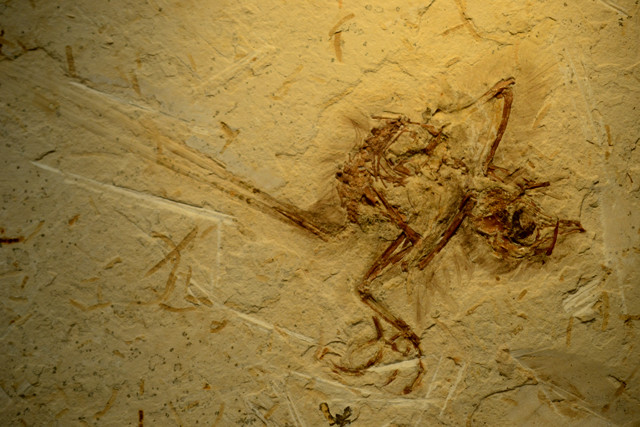
by Mary Caperton Morton Monday, September 21, 2015

The oldest bird from Brazil, found in Cretaceous rocks dating to 115 million ago. Credit: Ismar de Souza Carvalho.
Delicate bird bones and feathers aren’t easily preserved as fossils, and most known examples of Cretaceous birds and feathers come from a few sites in northeastern China. An exquisitely feathered bird fossil found recently in the Araripe Basin of Brazil is the first to be discovered in South America, putting the ancient southern supercontinent Gondwana on the map of early avian evolutionary history.
The new fossil, about the size of a hummingbird and dating to 115 million years ago, is also one of the few bird fossils to be found preserved in three dimensions. The specimen showcases a type of tail feather known as a ribbon feather, which is not found in living birds. Ribbon feathers had only previously been known from flat, two-dimensional fossils found in specimens from China, but the Southern-Hemisphere find indicates the feathers were once geographically widespread among aves.
The feathers display a row of spots, which the authors, led by Ismar de Souza Carvalho of the University of Brazil in Rio de Janeiro, interpret as the remnants of ornamental color patterns, possibly used for sexual display, species recognition or camouflage.
Because such feathers are not found in living birds and had only previously been found preserved in two-dimensional fossils, their structure and function had been something of a mystery. The new fossil helps confirm that ribbon feathers were likely ornamental and not used for flight, the team reported in Nature Communications.
© 2008-2021. All rights reserved. Any copying, redistribution or retransmission of any of the contents of this service without the expressed written permission of the American Geosciences Institute is expressly prohibited. Click here for all copyright requests.